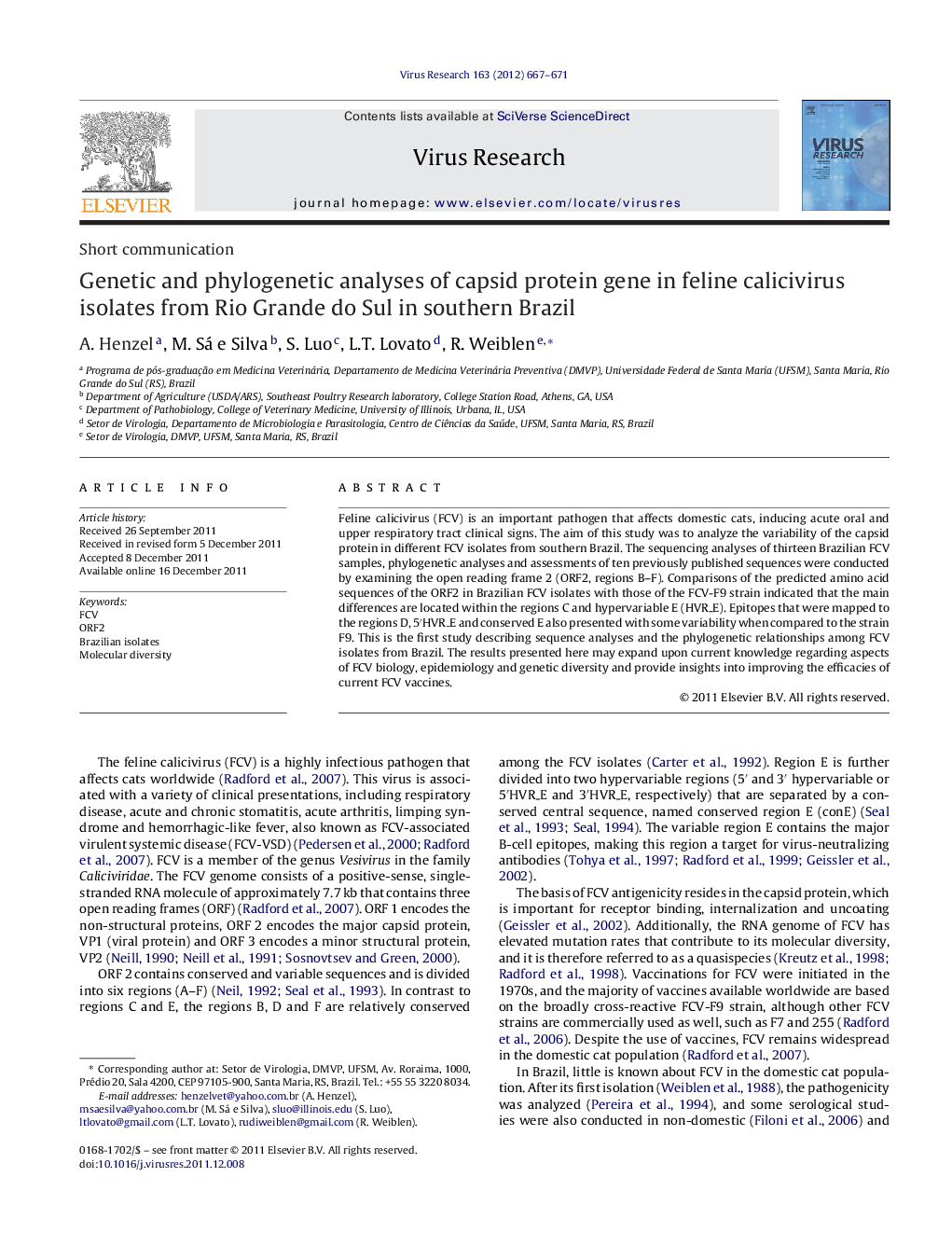| Article ID | Journal | Published Year | Pages | File Type |
|---|---|---|---|---|
| 3428916 | Virus Research | 2012 | 5 Pages |
Feline calicivirus (FCV) is an important pathogen that affects domestic cats, inducing acute oral and upper respiratory tract clinical signs. The aim of this study was to analyze the variability of the capsid protein in different FCV isolates from southern Brazil. The sequencing analyses of thirteen Brazilian FCV samples, phylogenetic analyses and assessments of ten previously published sequences were conducted by examining the open reading frame 2 (ORF2, regions B–F). Comparisons of the predicted amino acid sequences of the ORF2 in Brazilian FCV isolates with those of the FCV-F9 strain indicated that the main differences are located within the regions C and hypervariable E (HVR_E). Epitopes that were mapped to the regions D, 5′HVR_E and conserved E also presented with some variability when compared to the strain F9. This is the first study describing sequence analyses and the phylogenetic relationships among FCV isolates from Brazil. The results presented here may expand upon current knowledge regarding aspects of FCV biology, epidemiology and genetic diversity and provide insights into improving the efficacies of current FCV vaccines.
► The major capsid protein (ORF2) gene of thirteen Brazilian isolates of feline calicivirus (FCV) was sequenced. ► Sequences were compared to standard strain F9. ► The main differences are located in regions C and hypervariable E. ► The nucleotide distance values of region E (ORF2) of the Brazilian isolates and F9 strain varied from 0.8% to 50.1%. ► This is the first description of Brazilian sequences of FCV.
